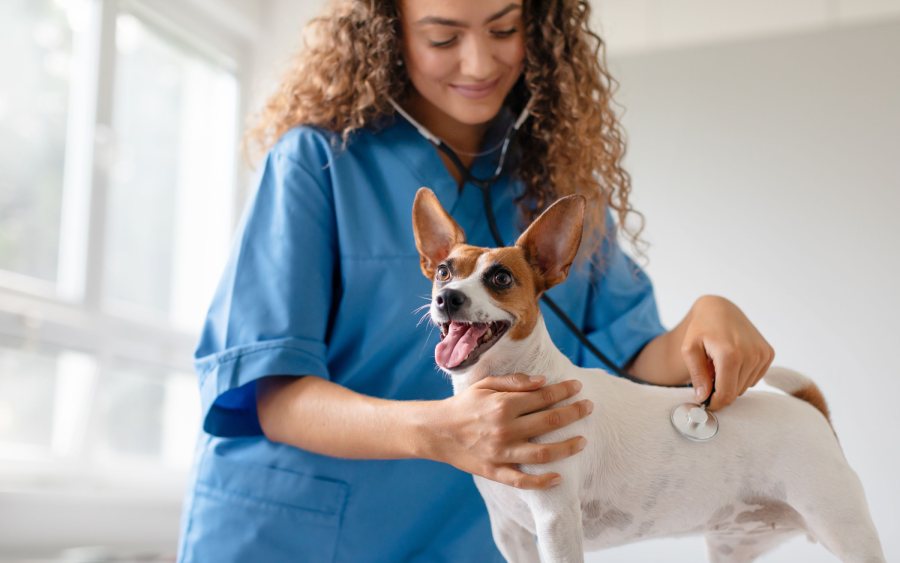Separation anxiety is a common condition that affects dogs and cats, but it doesn’t have to limit your pet’s life. Here are five ways to support pets who struggle with being alone.

#1: Recognize separation anxiety signs
When pets with separation anxiety are separated from their owner, the panic they feel affects their behavior, well-being, and quality of life. Pets can express this anxiety in a variety of ways, including:
- Excessive barking, whining, or howling
- Destructive behaviors (scratching or chewing, especially near exits)
- House soiling
- Pacing
- Panting
- Trembling
- Attempted escape
These behaviors usually happen when the pet’s owner is gone. A good way to tell if your pet has separation anxiety or simply needs more training is to ask yourself when the behavior occurs. If it happens in your presence, consult a trainer. If it happens in your absence, schedule an appointment at Firehouse Animal Health Centers to discuss separation anxiety with our team.
#2: Understand that it’s not your fault
When your pet has separation anxiety, it can feel like you’ve done something wrong. However, separation anxiety is a complex issue that can be influenced by many things, including early-life experiences and genetics.
Your pet isn’t choosing to feel this way—they can’t control their emotions. Similarly, it’s not your fault they feel anxious when you’re gone. Replacing guilt with action will help you both move forward.
#3: Talk to your veterinarian
Our veterinarians understand that how your pet feels is an important part of their overall health. If you suspect your pet has separation anxiety, we recommend a full physical exam to rule out pain or other conditions that can trigger distress.
If your pet is otherwise healthy, we’ll help you understand what your pet is going through and create a plan to lower their anxiety and feel safe when you’re not home.
#4: Build confidence and comfort with daily routines
Pets with separation anxiety quickly learn how to tell when their owner is about to leave. Actions like putting on your shoes, picking up your keys, or starting the car predict your departure and trigger big stress for your pet. Many owners try to comfort their pet before leaving, but this can often make anxiety worse.
Instead, create calm, simple routines around leaving and coming home. Try not to make a big deal out of goodbyes or greetings. Mix up your tasks (i.e., put your shoes outside, carry your keys around at random times) and only greet your pet when they are calm and settled.
Keeping things low-key teaches your pet that comings and goings are nothing to worry about.
#5: Embrace multiple tools or strategies to help your pet
Separation anxiety is not a curable condition, but it can be successfully managed with consistent and compassionate care. What works for one pet may not work for another, so it’s important to keep an open mind and try different approaches or combinations until you find one that helps your unique pet.
Common management tools and strategies include:
- Behavior modification — Strategies such as desensitization and counterconditioning help your pet form positive emotional responses to being left alone or without their preferred person.
- Calming pheromones or supplements — Calming pheromones, anxiety wraps, and supplements can help some pets feel calm and relaxed.
- Mental enrichment — Toys and puzzles that engage your pet’s mind can promote healthy endorphin release, helping your pet feel satisfied and calm. Long-lasting options such as food-stuffed hollow toys can also provide an effective yet positive distraction when your pet is left alone.
- Anti-anxiety medications — Ideal for severe distress, medications work best when paired with behavior modification training.
Separation anxiety isn’t a training issue—it’s a behavior problem that comes from stress and fear. The good news is that it can get better with time, patience, and the right care. If you think your pet might be suffering from separation anxiety, the Firehouse team is here to help. Contact your neighborhood Firehouse location to make an appointment. Then take a deep breath. Together, we’ll help your pet feel calm, safe, and loved.
